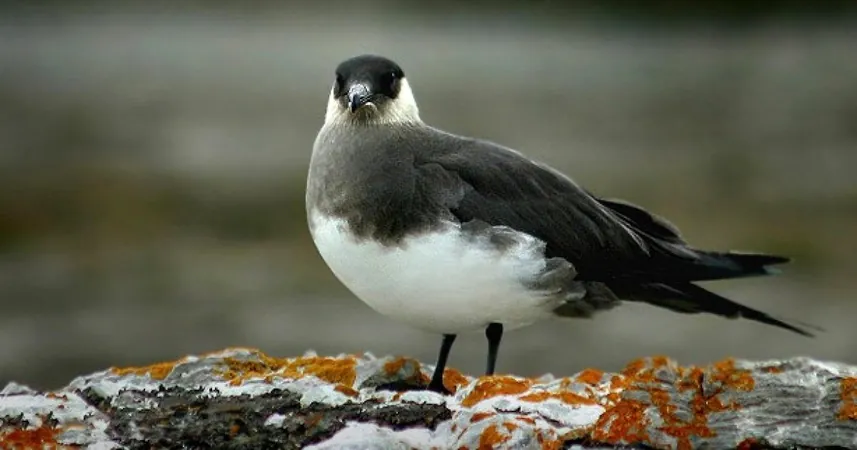
Ancient Arctic Bird Nesting: A 73-Million-Year Legacy Uncovered!
2025-06-13
Author: Sarah
Shocking Discovery: Birds Have Thrived in the Arctic for Millennia!
New groundbreaking research unveiled in the esteemed journal Nature reveals a stunning truth: birds have been nesting in the Arctic for a staggering 73 million years, far longer than scientists ever imagined!
A dedicated team of researchers meticulously examined over 50 fossilized remains in northern Alaska, suggesting that some of the early ancestors of modern birds either migrated to or ingeniously adapted to the harsh polar environment during the Mesozoic era, a period dominated by dinosaurs.
The Cretaceous Challenge: Surviving the Arctic's Dark Days
While the Cretaceous Period enjoyed a warmer climate than today's frigid Arctic, living in the polar regions was no easy feat. With months of near-total darkness, these birds faced an array of challenges as they established their nests in such a formidable environment.
A History Older Than Dinosaurs: The Arctic's Feathered Residents
Today, birds are an integral part of the Arctic, but this research highlights a fascinating timeline that stretches back millions of years, well before the cataclysmic meteorite that extinguished non-avian dinosaurs. Lead author Lauren Wilson from the University of Alaska Fairbanks stated, "Birds have existed for 150 million years. For half of that time, they've been nesting in the Arctic!"
Unlocking the Secrets of the Past: Fossil Finds and Their Significance
The remarkable findings stemmed from an analysis of bird fossils, including embryos and hatchlings from the University of Alaska Museum of the North’s extensive collection. These fossils were discovered in the Prince Creek Formation along Alaska's North Slope, an area known for its rich dinosaur heritage.
Researchers meticulously transported tubs of screened sediment back to their labs, examining them under microscopes, which led to the identification of numerous new species and richer insights into the physiology and behavior of Arctic inhabitants during the Cretaceous.
A Game-Changer: Rewriting the Timeline of Arctic Bird Breeding
This astonishing discovery pushes back the timeline of avian breeding in the polar regions by an impressive 25 to 30 million years! Critical adaptations like rapid development and proficient flight were likely pivotal to these birds’ survival and success in the epoch following the Cretaceous.
Challenging Assumptions: The Advanced Behaviors of Early Birds
Wilson challenges the common misconception that these ancient birds were too primitive for advanced behaviors. She remarked, "You’re either dealing with Arctic winters as a tiny hatchling or you’re a three-month-old bird flying up to 2,000 kilometers to migrate. It's surprising!"
Concluding the study, Pat Druckenmiller, the paper's senior author and director of the University of Alaska Museum of the North, remarked, "The Arctic is considered the nursery for modern birds," underscoring the significance of this new research.



 Brasil (PT)
Brasil (PT)
 Canada (EN)
Canada (EN)
 Chile (ES)
Chile (ES)
 Česko (CS)
Česko (CS)
 대한민국 (KO)
대한민국 (KO)
 España (ES)
España (ES)
 France (FR)
France (FR)
 Hong Kong (EN)
Hong Kong (EN)
 Italia (IT)
Italia (IT)
 日本 (JA)
日本 (JA)
 Magyarország (HU)
Magyarország (HU)
 Norge (NO)
Norge (NO)
 Polska (PL)
Polska (PL)
 Schweiz (DE)
Schweiz (DE)
 Singapore (EN)
Singapore (EN)
 Sverige (SV)
Sverige (SV)
 Suomi (FI)
Suomi (FI)
 Türkiye (TR)
Türkiye (TR)
 الإمارات العربية المتحدة (AR)
الإمارات العربية المتحدة (AR)